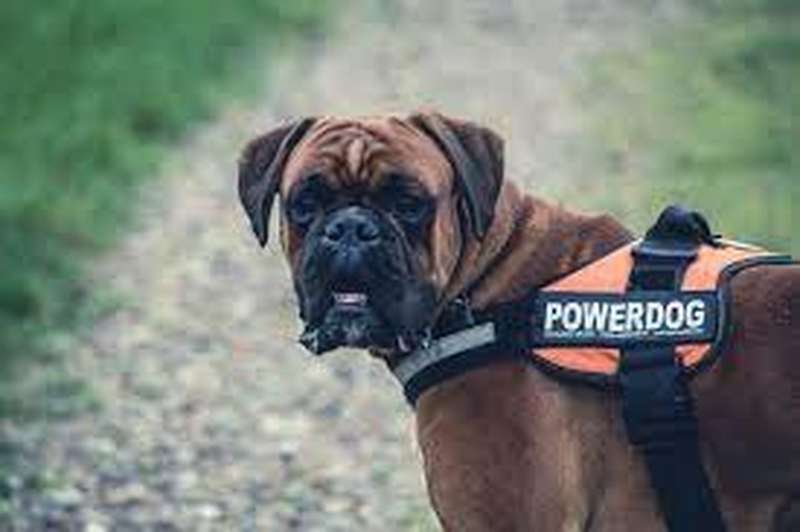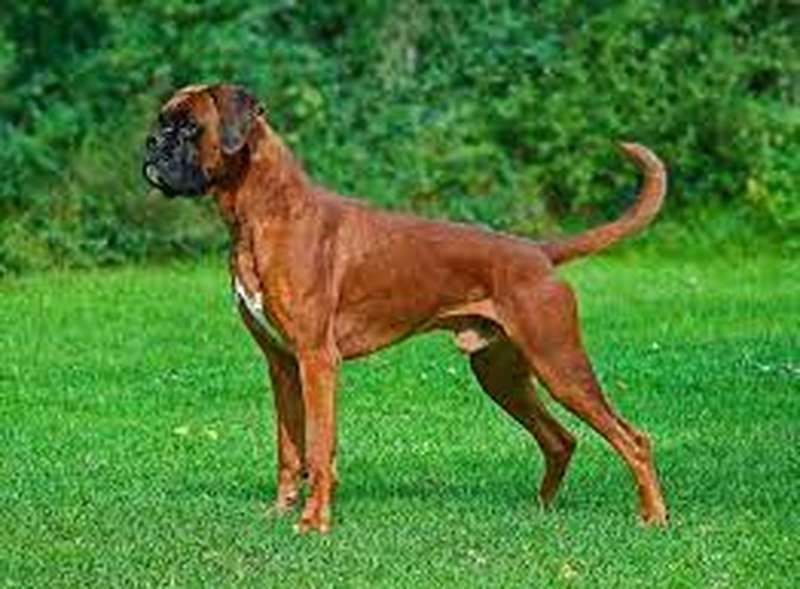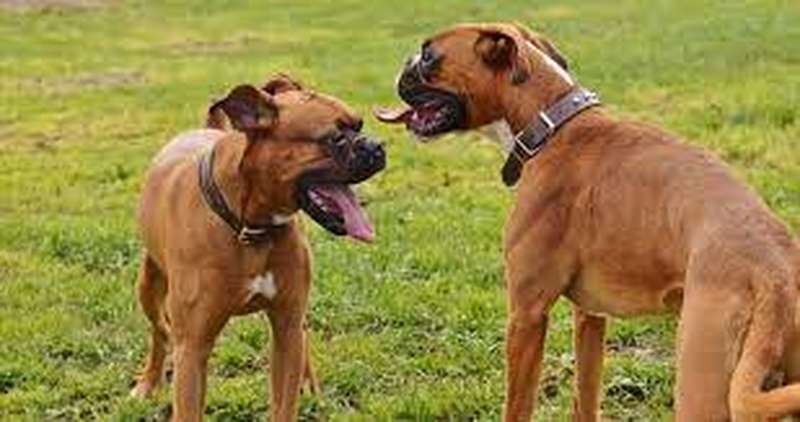With a square jaw and a muscular build, this Boxer possesses the charm and attractiveness reminiscent of George Clooney in the dog world. Not only is this dog a sight to behold, but it also has a delightful sense of humor and a hidden tenderness. The Boxer is recognized for its muscular and athletic build, typically ranging from medium to large in size.

Boxer Overview
| OFFICIAL NAME | Boxer |
| COMMON NAME | Boxer |
| PET HEIGHT | 21 to 25 inches |
| PET WEIGHT | 50 to 80 pounds |
| LIFESPAN | 10 to 12 years |
| GOOD WITH | children, dogs, families, seniors |
| TEMPERAMENT | friendly, outgoing, playful, willful |
| INTELLIGENCE | high |
| SHEDDING AMOUNT | occasional |
| EXERCISE NEEDS | high |
| ENERGY LEVEL | active |
| VOCAL LEVEL | infrequent |
| DROOL AMOUNT | medium |
| BREED GROUP | working |
| BREED SIZE | large (61-100 lbs.) |
| COAT LENGTH | short |
| COLORS | fawn, white |
| PATTERNS | brindle |
| OTHER TRAITS | apartment-friendly, good hiking companion, low prey drive, prone to health issues, strong loyalty tendencies, the tendency to chew |
Boxers are strong, bulky, and stocky.
Male individuals of this species typically reach a length of approximately 25 inches and have a weight ranging from 65 to 80 pounds (equivalent to 30 to 36 kilograms).
On the other hand, females generally grow to a length between 21 and 25 inches and weigh around 50 to 65 pounds (which is approximately 22 to 30 kilograms).
Boxers possess regal square heads with a distinct shape. The individual has an undershot jaw and a blunt muzzle. They possess a comprehensive, robust chest and a comparatively shorter yet sturdy back.
Boxers naturally have ears that fold over, but historically, their ears have been traditionally cropped to make them stand erect.
Their tails are typically docked and held high. Their feet have a compact structure, and their toes are arched.
The coat of the boxer is short, and it sheds moderately. There are boxers that come in a rich, fawn color, while others have a brindle coat.

The face or mask of raccoons is typically black, although some may have white face markings and white fur on their chest and paws.
History Of Boxer
According to ABC, the modern-day boxers that we are familiar with have descended from a lineage of powerful war dogs called the molossus.
These dogs were highly regarded in the Assyrian empire around 2,500 B.C. During the 19th century, breeders from Germany and Belgium developed Bullenbeissers by crossbreeding them with other dogs, such as mastiffs and English bulldogs.
These Bullenbeissers were primarily used for hunting large game and for managing cattle. A sleeker type of dog known as the boxer was developed through further refinement.
According to certain canine historians, the term “boxer” is believed to have originated from a German word, “box,” which was used to describe the bullenbeisser’s function in slaughterhouses.
On the other hand, some argue that the name refers to how these dogs play, specifically how they use their front paws.
The boxer breed was officially recognized by the American Kennel Club in 1904. According to the ABC, a boxer named Sigurd was born in 1929 and sold to a kennel in California when he reached 5.
He and his descendants were the pioneers of boxing in the United States. Furthermore, he achieved the remarkable feat of winning the prestigious Best of Breed title at the renowned Westminster Dog Show in 1935.
What is the size of a boxer dog?
Male individuals typically have a shoulder height ranging from 22.5 to 25 inches, with an average weight of approximately 70 pounds.
Female individuals generally have a height ranging from 21 to 23.5 inches and weigh approximately 60 pounds.
The personality of a boxer.

The Boxer is a vigilant guard dog with excellent hearing abilities. It is a dignified and self-assured breed, although it can sometimes be quite playful and clownish.
Children are patient and playful. People tend to be cautious when encountering strangers, but they tend to respond politely to friendly individuals. They only exhibit aggression when defending their family and home.
Temperament can be influenced by various factors such as heredity, training, and socialization. Boxer puppies that have good temperaments are known for being curious, playful, and friendly towards people, often showing an openness to approach and be held.
Socialization is crucial to ensuring that dogs grow up to be well-rounded and friendly. Early exposure to diverse experiences, people, and places plays a significant role in achieving this goal.
Enrolling puppies in puppy kindergarten classes and providing them with regular interactions with visitors, neighbors and exposure to different environments can greatly contribute to developing their social skills.
Boxer Health
Boxers are typically healthy; however, like all dogs, they are prone to specific health conditions that owners should be mindful of.
While it is not guaranteed that all Boxers will develop these diseases, it is important to be aware of them when contemplating getting this breed.
Here are some conditions that you should be aware of, along with the necessary precautions to take:
Cancer:
Boxers are more susceptible to developing mast cell tumors, lymphoma, and brain tumors. White boxers with excessive white markings are at risk of sunburn and the potential development of skin cancer.
When going outdoors, applying sunscreen to your ears, nose, and any exposed areas of your skin is essential.
Aortic stenosis or sub-aortic stenosis (AS/SAS):
Boxers commonly have a heart defect. This condition causes the narrowing of the aorta below the aortic valve, which strains the heart’s blood supply.
This condition has the potential to cause fainting and sudden death. After detecting a heart murmur, a veterinary cardiologist can diagnose the condition. It is advisable to refrain from breeding dogs that are affected.
Boxer cardiomyopathy, or BCM
An irregular heartbeat caused by an electrical conduction disorder is a hereditary condition. It may lead to weakness, collapse, or even sudden death.
Detecting certain things can be challenging, unfortunately, resulting in unexpected deaths. Dogs exhibiting symptoms of this condition should not be used for breeding.
Hip dysplasia
A heritable condition characterized by the thighbone not fitting securely into the hip joint. While some dogs may display signs of pain and lameness, others may not show any signs of discomfort.
X-ray screening is a valuable tool for detecting hip dysplasia affecting dogs. It is important to note that dogs diagnosed with hip dysplasia should not be used for breeding.
Hypothyroidism:
Hypothyroidism is a condition characterized by a lack of thyroid hormone, which can result in infertility, obesity, mental dullness, and a lack of energy. Daily thyroid replacement pills can effectively manage it.
Corneal dystrophy
Boxers can inherit non-inflammatory eye diseases that affect one or more layers of the cornea, resulting in the formation of opaque areas in the eyes.
Demodectic mange
Demodicosis, also known as Demodex mites, is a condition that is transmitted from mother dogs to their puppies. Demodectic mange can occur when the immune system is weakened, causing skin problems that can be either localized or generalized.
Gastric dilatation-volvulus (GDV)
This life-threatening condition, also known as Bloat or Torsion, is commonly observed in deep-chested dog breeds such as Boxers. Feeding habits and exercise patterns can influence GDV. It is critical to get medical help right away.
Allergies
Boxers tend to develop allergies, which both environmental factors and certain types of food can cause. If your pet has itchy, scaly skin, it is important to have them examined by a veterinarian.
Deafness
White boxers have a higher susceptibility to deafness, with approximately 20% of them being affected. Responsible breeding plays a crucial role in minimizing the likelihood of deafness.
The health and wellbeing of Boxers must be maintained by routine veterinarian examinations and early detection.
Feeding a Boxer
To ensure an ideal diet for your Boxer, select high-quality food that is specifically formulated for medium-sized breeds with high energy levels.
Enhance their prospects of enjoying a long and healthy life by ensuring they receive adequate nutrition. It is important to follow a consistent eating schedule that includes two meals per day to avoid gaining weight.
It is advisable to limit the amount of treats given and to avoid leaving food out for extended periods of time. It is important to adhere to the guidelines provided by your veterinarian when it comes to maintaining a healthy diet for your Boxer.
This is because the dietary requirements of Boxers vary as they transition from being puppies to adults and eventually into their senior years.
It is advisable to consult with your veterinarian for personalized recommendations that take into account factors such as weight, energy levels, and overall health.
Here are some interesting facts:
- Boxer dogs from America are renowned for their playful and silly personalities. They also possess a unique wiggling motion, often called a “kidney bean.” This motion involves curving into a semi-circle shape and spinning around when they are incredibly excited!
- Boxers are beloved companions of numerous famous individuals. Comedian Chelsea Handler and her boxer, Jax, were involved in promoting her dog food charity, Dog for Dog. In 2012, actress Jennifer Aniston, known for loving dogs, adopted a pit bull-boxer mix named Sophie. Typically, Aniston has at least two or three furry companions by her side. The actress Jessica Biel and her husband, pop music sensation Justin Timberlake, are often photographed by paparazzi while taking walks with their boxers, Buckley and Brennan.